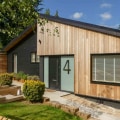Timber frame construction has experienced a renaissance in modern architecture, merging sustainability with structural innovation. Once limited to small residential projects, timber framing now plays a central role in large-scale commercial and institutional buildings around the world. This shift has prompted significant changes in building codes, as regulators adapt to the unique characteristics of engineered wood materials and the growing demand for eco-conscious construction. These evolving standards are not only making it easier to design and build with timber at scale but also ensuring that safety, performance, and environmental responsibility remain at the forefront of construction practices.
From Traditional Craft to Engineered Precision
Historically, timber frame buildings were associated with craftsmanship and tradition, often relying on heavy beams joined by mortise-and-tenon connections. Modern large-scale projects, however, incorporate advanced materials such as cross-laminated timber (CLT), glued laminated timber (glulam), and laminated veneer lumber (LVL). These engineered wood products possess remarkable strength-to-weight ratios, rivaling steel and concrete in structural capacity. Building codes have evolved to reflect these advancements, introducing detailed provisions for load-bearing capacity, fire resistance, and seismic performance. By recognizing timber as a legitimate alternative to conventional materials, codes are enabling architects and engineers to push the limits of wooden structures—rising taller and spanning farther than ever before.
Fire Safety and Structural Integrity
One of the primary challenges for regulators has been addressing concerns about fire safety in multi-story timber buildings. Traditional codes once limited wood-frame construction to low-rise developments due to fears of rapid combustion. However, extensive research and full-scale fire testing have demonstrated that engineered timber behaves predictably under fire conditions. Massive timber elements char on the outside, forming an insulating layer that protects the structural core. This understanding has led to code updates allowing taller mass timber buildings—sometimes reaching up to 18 stories—provided they meet specific fire testing and encapsulation standards. The integration of automatic sprinkler systems, fire-resistant coatings, and advanced smoke control mechanisms ensures that these new timber towers meet the same, if not higher, safety thresholds as their steel or concrete counterparts.
Sustainability and Environmental Regulations
The growing emphasis on sustainability has also influenced the evolution of building codes. Governments and municipalities worldwide are prioritizing renewable, low-carbon materials, positioning timber as a key player in green construction. Updated codes now account for life cycle assessments, carbon sequestration, and sustainable forestry certifications. Timber’s natural ability to store carbon dioxide makes it a crucial component in achieving net-zero building goals. By aligning structural design regulations with environmental policies, code revisions are supporting the global movement toward climate-conscious urban development.
Construction Efficiency and Modern Tools
In addition to material advancements, evolving codes also reflect the importance of construction efficiency and site safety. Large-scale timber projects often rely on prefabrication and modular assembly, which reduce waste, shorten timelines, and minimize disruption in urban environments. On these construction sites, maintaining cleanliness and operational order is essential to preserving the precision required for timber assembly. Specialized equipment such as Staplermaxx industrial cleaning machines helps ensure that building environments remain dust-free and debris-free, protecting both the structural materials and the health of workers. Such innovations complement updated building codes that increasingly emphasize workplace safety and environmental quality throughout the construction process.
Collaboration Between Regulators and Innovators
The evolution of building codes is not occurring in isolation. It’s the result of close collaboration among engineers, architects, researchers, and policymakers working to balance creativity with compliance. Pilot projects and demonstration buildings often serve as testing grounds, providing real-world data that inform future code amendments. This iterative approach allows the construction industry to adopt new technologies while maintaining public trust in the safety and performance of large-scale timber buildings.
Conclusion: A Future Built on Sustainable Innovation
The evolution of building codes marks a pivotal moment for modern construction—one that acknowledges the potential of timber not just as a traditional material, but as a cornerstone of sustainable design. By redefining safety standards, embracing environmental accountability, and encouraging innovation, regulators are paving the way for cities built with renewable strength and architectural beauty. As codes continue to evolve, large-scale timber frame projects stand as a symbol of progress, bridging the gap between engineering precision and ecological responsibility for generations to come.



